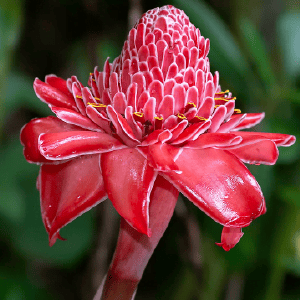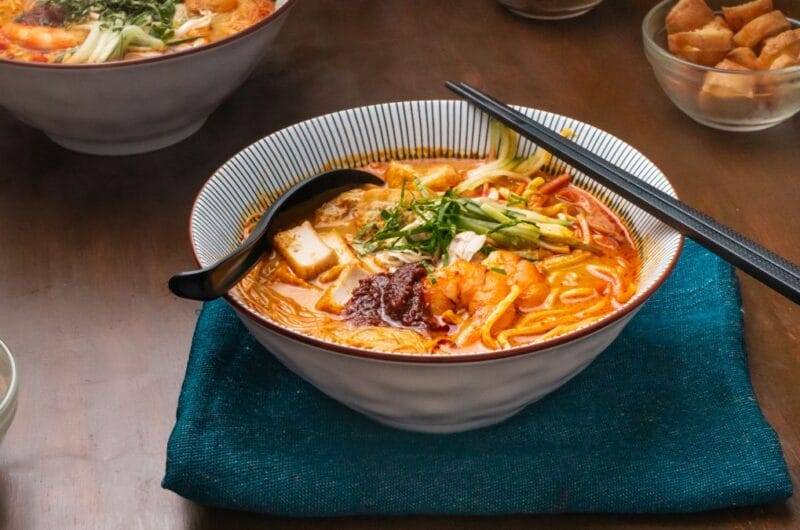The noodle soup , or laksa is one of Malaysia’s iconic dishes. It takes many names and even more forms. Today we make Curry Laksa, or the Malacca Nyonya Laksa to be precise. A rich dish of coconut milk, prawns and spice!.
Let’s Talk Laksa
In case you’re a novice to Laksa, let’s discuss the options. There are two basic laksa genres: asam laksa and curry laksa.

Asam Laksa
Asam means “tamarind,” and therefore Asam Laksa is a tart and sour fish soup made from the tamarind fruit.
It also contains belacan, the famously tangy shrimp paste, and various aromatics. It produces a thin broth and usually served with rice noodles, chunks of white fish which is cooked in the broth, and then garnished with shredded cucumbers, pineapple, and the bright pink, and somewhat bitter, torch ginger flower.

Similar versions, with slight regional variations are known as Penang Laksa and Ipoh laksa, due to the towns in which they originated.

Curry Laksa – Malacca Nyonya Laksa
Curry Laksa, also known as Laksa Lemak and Nyonya Laksa is a much richer dish. The soupy broth has a coconut milk base and is added to a pan fried spicy paste.
This soup is poured over noodles and garnished with tofu puffs, shrimp, bean sprouts and egg.
If you hear someone describe a dish as just “Laksa,” this is usually the one they are talking about.
Like many Malaysian dishes, it starts with the blending of a spice paste consisting of turmeric, galangal, lemongrass, and belacan shrimp paste. This is then cooked down to blend and concentrate the flavors. The addition of shrimp or chicken broth turns the thick paste into a delicious soup with coconut milk being added at the very end just before serving.

Regional Variances
Of course, as with all beloved dishes there are considerable variations that have been created. People have added preferred ingredients and taken away those they do not enjoy. Chefs have tried to make improvements. But often the main reason was simply the need to substitute items that could not be found, or were to expensive, with local meats and produce.
In Penang, in the north of the country, you’ll find Asam Laksa is more prevalent, and it is often much more tart and very spicy. This is due to their proximity to Thailand and affinity for those flavors.
You will also find Curry Laksa is called Curry Mee, and is often topped with congealed pork blood. You’ll note the locals watching with interest as travelers slurp it down with great enjoyment, many likely to be completely unaware of the extra special ingredient!
In Johor, Laksa uses coconut milk and also the toasted coconut known as kerisik. They also use fish as a main ingredient rather than prawn.
In other parts of the country, Curry Laksa incorporates fish into the broth and eel is added as a garnish. In Singapore, Borneo, and Indonesia, you’ll find even more variations.
But today we offer the recipe for the Curry Laksa! Enjoy!














